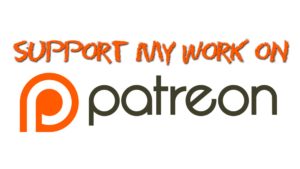How to Teach Well
Why do students struggle so much? Let’s break it down and see how perplexing this really is. If you’re teaching High School or higher you’re presumably an expert in your content area. You know what you’re teaching upside down, inside out, front, back, and so on. Not only that, if you’re an experienced teacher, you know how to disseminate that information in clear, concise and easy to follow. You also know exactly what the hang-ups will be for students and how to remediate in response.
As an expert teacher you can lay out the path to understanding clear for all to see. And yet, they struggle.
You might think, well, the students are probably at their threshold, their potential is being pushed here. Maybe they lack background knowledge, they forgot the prerequisite knowledge required for this new learning to occur.
Well, let’s step back a little here. How do we know if they learned it anyway? I mean, yeah, they passed the previous class with another teacher, maybe it’s the teacher’s fault. Surely, that doesn’t happen with your students, when you teach them, right? You know when they know it, don’t you?
If they can pass a test, or some sort of formal evaluation, they got it, right? If kids pass your class, they got it, right?
Wrong.
Go back to one of our original contentions about why students struggle…because of prerequisite knowledge. How many of your students move on and struggle because they do not really know what they should know from your class. I am not a betting man but I would lay down a lot of money that it is a higher percentage than you believe. Only those with the pre-emptive disappointment outlook would be unsurprised to find out how many of their students passed their class, with good marks, only to struggle with that same material in the future.
There’s good reason that happens, even to the best of us teachers and with our best students. It happens because when they’re passing a test, it’s your test. They’re demonstrating they know what you want. They know how to show proficiency in the markers you’ve set up that should reflect understanding and knowledge. They hacked you.
It’s not with ill-intent, it’s well within the structure of education today, the world-around! It is not the fault of the student, our system made them this way. It’s not our fault either, the system made us this way!
I say that if a student cannot readily apply what they learned in my class in a future event then they don’t know it. How then, can I assign an appropriate grade? Grades should be a reflection of what they know. We must assign grades regularly, without the perspective of time that provides such insight to future application and adaptation.
What can be done?
There is a YouTube channel, Veritasium. The host of that channel earned his PhD by researching the effects of learning through video. Students would take a pre-test, then watch a video that discussed the information on the test. Students would take a post-test.
Students, actually I’d like to call them observers, reported that the videos were clear, concise and generally good. They liked the videos. When they took the post-test, there was no significant growth.
With another group he did the same pre and post-test, but the video was different. The video addressed and exposed misconceptions. Students reported the video was confusing and unpleasant, unenjoyable. The post-test scores doubled the pre-test scores with this group!
I’ve said it a million times before, students do not need us to be resident experts, the on-site answer-spewing reference resource. It is easy for us to do that, it is comfortable for them. But they don’t learn that way.
I tried to put this together in that same spirit: Expose misconception before proposing a solution. Otherwise, it is likely you would just latch onto the proposed solution as though you already knew that whether you actually did or not.
All of education, it seems, pushes hard to relieve confusion, to make the path to learning clear and clean, and most importantly for the stability of schools, repeatable. But the more we push in this direction, the deep we dig our hole.
There are nods towards creating interest and the power of cognitive dissonance in education texts and professional development. But, they’re pretty empty words because they’re given in a way that is poor teaching. The best teachers, with the best ideas and the most experiences epically fail to teach others because they do not employ the same quality teaching strategies when teaching other teachers.
Here’s the information, make it your own, doesn’t work.
I hope that I have sufficiently exposed the nature of the problem with teaching so that my solutions will find a home in those exposed gaps. You see, in teaching, in person, the way this is done is very important, but a video or blog post does not allow someone like me, with limited resources and an even smaller collection of talent, to demonstrate. I can only describe.
To teach well students must have their misconceptions exposed. The anticipatory set (bell work) is drivel if it does not contain a twist that either incites curiosity or exposes a conceptual flaw held by the students.
This is key, it’s the first step. The thing you want them to know cannot be tackled head on. If the objective of the unit was to have them paint the wall blue, for example, you could not just tell them to pain the wall blue. They might get it done to your standard, but all of the thinking and discussion amongst peers that makes them understand (which leads to retention) is stifled. Instead, they’ve been taught protocol, they’ve been programmed, trained.
An example of a good question to introduce a topic that seems, well, goofy, might be: Which came first, goofy the word or the cartoon character?
Another would be: Why does the dictionary say that a verb is a noun?
Another example might be: Water freezes at 32 degrees F, and 0 C, and boils at 212 F and 100C. Why are those numbers different?
Or perhaps: Is zero odd or even?
Then there is: Is it an evolutionary advantage to taste like chicken?
A non-sequitur can be effective: People died of cancer before cigarettes were around, therefore, smoking doesn’t cause cancer.
Be careful with these questions as you judge them. It is how they are received by the audience, not by you or your peers that is important. Don’t judge the quality of the question based on your knowledge, but based on whether the question leads to curiosity and uncovers misconception or not. And questions that are tangent to the topic at hand are great because they can flesh out connections in unanticipated ways!
Now students shouldn’t be expected to reinvent the wheel at every turn, there are appropriate times to introduce concepts fully. However, do not for a minute believe that no matter how well you taught that material, that the students understand it. They need the opportunity to play with it, uncover misconceptions and so on.
So you have an introduction that reveals misconception or creates curiosity to begin, and then perhaps you dispel misconceptions or introduce the material, but then what happens next, on your end, can drastically limit the efficacy of the previous work done.
They need quality tasks. They need a question or challenge that is approachable but also exposes common misconceptions. And here, your role is very important.
Practice this phrase: Go ask another student.
Say it nice, explain that the more you say on the subject the less they’ll learn, at least right now. But it is key that they are talking to each other. I advise against assigning groups, water finds its own level. It is okay if the smart kids all get together and get it right away, you can ask them something about their reasoning that they’ve assumed is true, but they don’t know why it is true. Or, you could instruct them to go around the room and observe the points of confusion of others and have them guide others in the right direction without giving it away. (They can do that, but you cannot.)
A quick word on groups. Groups should be no larger than four, but should be self-selected. I’ll make a future post about how to pull this off and keep kids on task, but it’s easier than it might sound. The rule is that if a group gets stuck, a member can go on a re-con mission and ask any group in the room questions and then report back to their own group.
What you’ll find is often no student, or group will have the answer or will have mastered the task. However, between all of the people in the room, the information is there, it just hasn’t been put together.
After an appropriate amount of time, have the students return to their individual seats and you facilitate a class-wide discussion as follows.
Ask a student a question or have a volunteer share their findings, complete or not.
After the student speaks, you say, sometimes cleaning up their language a bit, what they had said for the whole class to hear. Make sure to ask the student if that’s what they meant. If not, have them clarify. If you got it, ask the class the following, and this is probably the most important phrase/question in teaching:
I am not asking you if you agree or disagree with the statement, but do you understand it?
And again, the statement is spoken by you but the authority behind the statement is a student.
Whether that statement is right or wrong is irrelevant. The fact that it reflects where they are and what they’re thinking is why it’s powerful.
However, depending on if it is right or wrong, you can steer the direction of the conversation.
If it is wrong it might be a good idea to ask who agrees and see if someone can clarify further. Repeat what the student said in the same fashion as before.
More than likely, as students clarified and showed supporting evidence for the misconception, more and more students that originally disagreed with jump ship and latch on to the misconception. This is actually good. Just because they agreed with the right belief doesn’t mean they understood. This jumping ship is them challenging their understanding, finding holes in it and latching onto something better.
Then ask if someone disagrees. Have them explain, you parrot their explanation and again explain that whether the students agree or disagree, do they understand what’s been said. If the student that share is wrong, ask who agrees and have them see if they can find more supporting evidence, or different explanation as to why.
But, you are not giving away what you believe is right or wrong.
If the student is right, it would be best to see who disagrees and why. Explore the misconceptions, allowing students to challenge these lines of thinking. Eventually, they will arrive at the correct answer or understanding.
Through this type of discussion and explanation the truth will be revealed. But, most importantly, it is revealed by your facilitation of discussion, not because of your authority!
The best compliment I ever received about my teaching came from a student. It was unplanned and was not intended to be a compliment, just an observation. She said:
Mr. Brown, you don’t really teach us but we learn when we’re with you.
I will write more about this in the future. There are some growing pains and specific techniques for managing behaviors and expectations that are different than in a typical classroom setting.
All that said, I hope this has been informative, stirred some thought and challenged you to reconsider your role in the learning of students.



